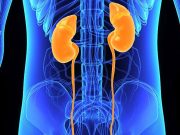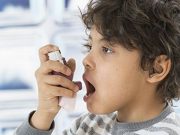Most Pregnant Women With SARS-CoV-2 Infection Are Asymptomatic
Patients who test positive for SARS-CoV-2 more likely to be Hispanic, report Spanish as primary language
Stress From Not Achieving Goals Tied to Worse Kidney Disease
African Americans reporting high versus low goal-striving stress scores more likely to experience RKFD
ACG Develops First Guideline for Irritable Bowel Syndrome
Authors suggest use of positive diagnostic strategy for improving time to initiation of appropriate therapy
Dietary Advanced Glycation End-Product Intake, Wheezing Linked
Higher AGE intake associated with wheeze-disrupted sleep and exercise, wheezing requiring prescription meds in children
Buprenorphine Rx Fills for OUD Plateau During Pandemic
Cash-paid prescriptions declined significantly, but no significant changes seen in those paid by public or private insurance
CDC: Life Expectancy for U.S. Population Increased in 2019
And age-adjusted rate of drug overdose deaths increased from 20.7 to 21.6 per 100,000 from 2018 to 2019
FDA Approves First Oral Hormone Therapy for Advanced Prostate Cancer
Phase 3 trial data show 96.7 percent of patients who received Orgovyx achieved and maintained castrate levels of testosterone
Low U.S. Flu Rates Seen as Pandemic Rages
Many more people are getting flu shots to avoid the risk for getting both the flu and COVID-19
U.S. Army Researchers Analyze New Coronavirus Variant
Walter Reed team is checking genetic sequences of the mutated virus variant
Atopic Dermatitis Tied to Autoimmune Diseases
Findings strongest for autoimmune diseases involving the skin, the gastrointestinal tract, or connective tissue














